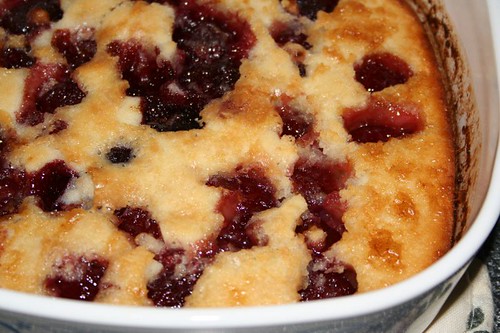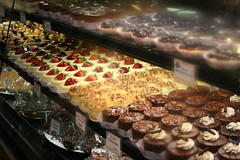
There are many people who have extreme reactions to Okra (Bhindi in Hindi, Bhendi in Marathi, Bhinda in Gujrati). There are those who like it so much that they can eat it as often as they can, and there are those who cannot stand it, usually because of the seeds or because of the slime. Then there are those like me who are more, ahem, balanced, about it. We like to eat it once every so often, but will not go overboard with it.
Selecting Okra
Fresh okra is available increasingly now in regular grocery stores as well as at farmers' markets, and especially during spring and summer. Look for uniformly green pods, that are tender and firm but not tough. Oh, and try not to snap the end of each pod to check if they are good. Snap one if you must, and if a batch is good, they are all likely to be good.
Cleaning and Prepping Okra
To avoid the okra getting slimy while it is being cooked, it is important that it is very dry beforehand. Washing okra is not recommended. I wipe each pod of okra with a damp towel, and let it dry completely before chopping. Trim off the ends before chopping it further as required by a recipe. Some preparations like 'Stuffed Bhindi' need only one slit along the length to create a pocket for the filling.
I make 'Bhindi Masala' two different ways, sometimes with tomato and sometimes without it, and I like both of them. Okra is capable of taking a lot of spice without getting too spicy, so do not be afraid to season it well. While cooking, add salt only towards the end, as salt tends to draw out moisture, which makes it undesirably sticky. I like the okra to be cooked well, to a point where it is crisp and has some brown spots. Best to serve with phulkaas, parathas, or rotis, with any kind of thick dal on the side.
Bhindi Masala (with tomato)
1 lb bhindi (okra)
1 medium yellow onion
1-2 ripe tomatoes, (1 is enough if it is large)
2-3 Tablespoons of oil
1 teaspoon of ghee (optional, but definitely adds to the flavor)
pinch of mustard seeds
1/2 teaspoon of cumin seeds
1/4 teaspoon of fennel seeds
1/4 teaspoon of turmeric
1/2 teaspoon of chili powder
1/2 teaspoon cumin powder
1/2 teaspoon coriander powder
few pinches ground black pepper
1/2 teaspoon amchoor (dried raw mango powder)
1/2 teaspoon garam masala
1/2 teaspoon of sugar
1 teaspoon salt, or to taste
2 Tablespoons chopped cilantro, optional
Clean the okra with a damp towel, and after it is completely dry, slice each pod of okra into thin rounds, discarding the ends. Slice the onion thinly and chop the tomato finely.
In a large kadhai or wok, heat the oil and ghee, and add mustard seeds. When they start to pop, add the cumin and fennel seeds, followed by onion, and saute for a minute. Add turmeric and okra and saute till it starts to change color slightly. Let it cook for a few minutes, then add the tomatoes and chili powder, and continue to stir-fry on medium-low heat until everything is cooked together, which takes 5-10 minutes depending on the okra. At the end, add salt, and the remaining spices, and keep cooking for a few more minutes on low heat, stirring if required. Add cilantro.
Without tomato

Everything stays the same, but increase the amount of amchoor to 1 teaspoon, and do not add sugar. The okra tends to get crisper in this version; since there is no tomato, the overall moisture content is reduced.
Note: A true Punj is likely to scoff at the mention of sugar in a sabjee, even in a tiny amount, so feel free to leave it out for authenticity's sake. I think it balances the acidity of the tomato and amchoor and helps to caramelize the okra very well. Mustard too, is not commonly added to Punjabi sabjees, so you can leave that out too.
I am sending this to the 'Regional Cuisines of India - Punjab' event.









































